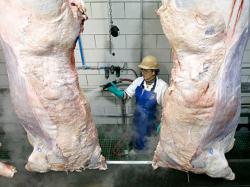New Rule Could Affect North Dakota’s Small Meat Processors
June 7, 2010 | 2 min to read

South Dakota’s meat processors produce 17 million pounds of meat per year under the South Dakota Meat Inspection Program, mostly through facilities classified as small or very small. Those meat processors may soon see a rise in the cost of doing business as a result of a new validation process proposed by the Food Safety and Inspection Service, the division of the U.S. Department of Agriculture responsible for ensuring the health of the nation’s food supply. Some critics say it could put some small producers out of business entirely.
The rule isn’t new. About 13 years ago the food safety service put into effect a requirement for every meat processor except those who market direct retail sales to have in place a Hazard Analysis and Critical Control Points Plan. Each processor was required to formulate a plan for food safety based on scientific research; then test the plan extensively for 90 days to make sure it maintained the necessary safety levels. If the hazard plan met the requirements, it was incorporated into the meat plant’s operating procedures.
But the federal safety and inspection agency recently issued a guidance document that outlines how small, low-volume plants can comply with the rules that have already been in place for 13 years. While this guidance document doesn’t introduce new regulations, the proposed new guidelines could require more testing at each phase of the meat processing system to ensure compliance with the Hazard Analysis and Critical Control Points Plan plans and make sure the plans are effective. Some small producers say the cost would be high enough to drive them out of business.
To read the rest of this story please go to: The Rapid City Journal
